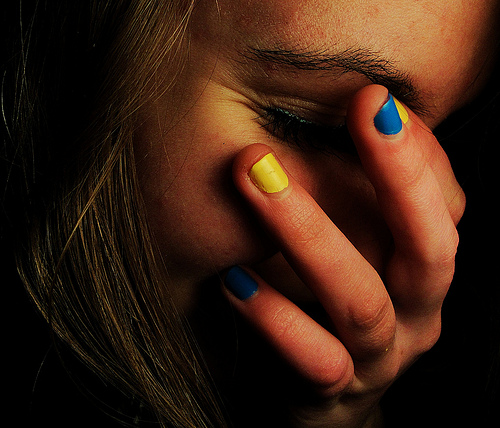 Paruresis, or any mental health issues or that matter, has been long linked to an increased risk of suicide. While depression was typically to blame, new research shows that even folks with mental health issues who don’t suffer from depression have a greater risk of suicide than others.
Paruresis, or any mental health issues or that matter, has been long linked to an increased risk of suicide. While depression was typically to blame, new research shows that even folks with mental health issues who don’t suffer from depression have a greater risk of suicide than others.
That’s the scary news. The good news is none of this information has to be scary, as understanding the link, keeping an eye out for warning signs and reaching out to give or receive help can make suicide preventable.
Suicide used to be a big hush-hush topic, taboo to talk about in public. Thankfully that is changing, as increasing awareness on the topic can help a great many people realize they are not alone – and that suicide never needs to be an option.
Understanding the Mental Health-Suicide Link
More than 90 percent of suicide victims have a diagnosable mental disorder, according to the Substance Abuse and Mental Health Service Administration. While paruresis is not specifically noted in the organization’s statistics, other mental health issues are.
These include:
- Major depression, with 2 to 15 percent of those diagnosed with major depression dying by suicide
- Bipolar disorder, with 3 to 20 percent suicide rate
- Schizophrenia, with a 6 to 15 percent suicide rate
- Personality disorders, with a suicide risk three times higher than those without personality disorders
- Depression coupled with other mental health issues, specifically depression combined with anxiety disorders, bipolar disorder, schizophrenia and substance abuse.
Mental health issues and substance abuse count as risk factors for suicide, and the National Institute of Mental Health points out several others. Risk factors do not automatically increase the risk of suicide, but they can contribute if the groundwork is already in place.
Risk factors include:
- Having a gun or guns in the house
- Prior suicide attempt
- Family history of suicide
- Family history of violence, physical or sexual abuse
- Incarceration
- Being exposed to suicidal behaviors in family members, friends or other people close to you
Panic Disorders and Suicide
Research has shown that people who suffer from panic disorder have a higher risk of suicide, and once again that increased risk was believed to come from depression. A study out of Ohio State University, however, found that those suffering from panic disorder may have other factors at work besides depression that are linked to suicidal thoughts.
Newsfix said the study surveyed 146 participants with panic disorder and found:
- 19 percent suffered from major depression
- 43 percent of the entire group had suicidal thoughts
- 25 percent of those suffering from agoraphobia had suicidal thoughts
- 10 percent of those without depression were a suicide risk
- 6 percent of those whose panic attacks stemmed from condition other than agoraphobia were a suicide risk
What does all this mean? The notable gap between those suffering from depression and those harboring suicidal thoughts indicates that depression plays a role in increasing suicide risk, but it is not the only factor playing a role.
What does this mean for you?
Be careful!
Because mental health issues and suicide are so strongly linked, it makes sense to address and deal with the issues that can only worsen if left untreated. Paruresis can morph into larger issues, such as the aforementioned agoraphobia. Shy bladder issues can additionally lead to other woes, such as the job liabilities pointed out by CNN.
“I receive daily calls from people who have lost their jobs or have been discriminated against because of this,” International Paruresis Association executive director Dr. Stephen Soifer told CNN. “It’s so sad to see this happening to good people, all people who have come up clean in drug testing (through blood testing or alternative testing methods),” Soifer said.
CNN continues: “Most recently, he received a phone call from a truck driver who confessed that he almost committed suicide when he was fired for not producing a urine sample.”
While not everyone suffering from a bashful bladder may encounter situations that are that extreme, it’s easy for a lot of little things to pile up and feel like a lot of big things if you’re trying to face them alone.
Suicide Warning Signs
Suicidal thoughts and behaviors can brew for some time, eventually transforming into noticeable warning signs pointed out by the National Institute of Mental Health.
Words
Talk is not cheap when it comes to warning signs for suicide. Those who are harboring suicidal thoughts often talk about:
- Wanting to die, suicide or how they wish they were dead
- Having no reason to live or feeling hopeless
- Being in excruciating or unbearable pain
- Feeling trapped
- Feeling isolated
- Seeking revenge
- Being a burden to others
Actions and Behaviors
Actions and behaviors to keep an eye out for include:
- Seeking out ways to kill themselves, such as purchasing a gun or searching online for methods
- Reckless or dangerous behaviors
- Withdrawing from family, friends, society
- Eruptions of range
- Extreme mood swings
- Agitated or anxious nature
- Excessive sleeping or not sleeping enough or at all
- Increased use of drugs or alcohol
Where to Get Help
Immediate help is available through a 24-hour hotline that can be a literal life-saver.
The National Suicide Prevention Lifeline: 1-800-273-TALK (8255).
Reaching out, even to talk with a total stranger, can help immensely.
If any of the warning signs are cropping up in your own life, or the life of someone you love, you can also reach out to therapists, psychiatrists and national or area support groups.
You never have to go through anything alone, especially with the Internet providing tons of resources right at your fingertips. Whether it’s face-to-face, with a phone call or even via a website or online support group, reaching out can start the ball rolling to receive the help that can transform – and save – your life.
SOURCES:
- http://www.newsfix.ca/2013/06/02/understanding-suicide-risk-in-panic-disorder/
- http://www.nimh.nih.gov/health/publications/suicide-a-major-preventable-mental-health-problem-fact-sheet/index.shtml
- http://depts.washington.edu/mhreport/facts_suicide.php
http://mentalhealth.samhsa.gov/suicideprevention/suicidefacts.asp




